Editor’s note: This blog post is part of the Millions Learning project, which seeks to understand how large-scale improvements can be made in learning across various sectors and disciplines. In the following, Chabbott compares BRAC’s experience scaling up an innovation in health with its work in primary education.
In the transition from Millennium to Sustainable Development Goals, the international development field has been atwitter with the importance of innovation and scaling up. Ambitious global goals cannot be achieved with business as usual; innovation will be necessary and on a large scale. It appears, however, that while many organizations can generate innovations, few can scale them up quickly.
Since 1971, BRAC has grown from a small Bangladeshi relief organization into the largest NGO in the world, earning a global reputation for scaling up. In our recently published book “Institutionalizing Health and Education for All,” Mushtaque Chowdhury and I recently looked at two of BRAC’s innovations in health and in primary education, hoping to make BRAC’s approach to scaling up more transparent.
Between 1979 and 1990, BRAC taught women in nearly 12 million households how to make and use a homemade oral rehydration solution—lobon-gur—and thereby dramatically and permanently reduce child deaths from diarrhea. Inspired by that experience, between 1985 and 1992 BRAC established 11,000 one-room, non-formal primary education (NFPE) centers (grades 1-3). Featured at an Education For All (EFA) round table in 1990, NFPE later proposed expanding to serve 6 million Bangladeshi children by 2000. When the government did not support that proposal, BRAC stopped expanding but continued operating about 34,000 centers. NFPE also continued to expand in other ways: upgrading its centers to full five-grade primary schools and establishing more than 20,000 pre-schools by 2010.
As BRAC’s first researcher in 1977, now its vice-chair, Dr. Chowdhury conducted much research on lobon-gur and, later, NFPE. For several decades, I have been studying community schools like NFPE and researching EFA efforts at the global level. We both recognized that lobon-gur was a simpler innovation, but careful comparison with NFPE brought many other factors to light.
We first identified similarities between the lobon-gur and NFPE scaling up efforts. We agreed that, (1) the nature of BRAC as an organization, and (2) Bangladesh as a development context played a major role in both efforts. BRAC’s process of scaling up, from field trial to final phase of the scale up, was similar in both cases: innovate, implement, measure, adapt, repeat. Unexpected major issues at each stage of scaling up demanded significant adaptation of both NFPE and lobon-gur throughout the scaling up process.
In both sectors, BRAC innovated not just the deliverable—lobon-gur and a one-classroom center—but delivery agents and delivery support systems. For both programs, BRAC identified and trained new paraprofessionals (secondary school completers living in the target areas) and provided them better, more consistent support than the official system provided to professionals in those contexts. In addition to regional training centers and laboratories, human resources, public relations, and printing divisions, BRAC embedded teams of program officers in the target areas to provide onsite support. Finally, more than 80 percent of rural Bangladesh—over 56 million people—spoke one language and engaged in farming, fishing, or related enterprises. BRAC needed only one model to reach an enormous number of people. Later, when it expanded into urban slums and later still in other countries, BRAC had to adapt both lobon-gur and NFPE to these new contexts.
Specific characteristics of the innovations also helped to explain different outcomes. Proponents of conventional models of primary health care and primary education systems challenged both models. However, lobon-gur had several advantages in overcoming that challenge, including:
- A low-cost, scientifically validated, stand-alone model was on-the-shelf before the initiative began.
- A critical mass of the scientific community was prepared to rally around a selective intervention rather than hold out for a comprehensive (a complete primary care system) approach. Oral rehydration was developed by an international scientific research center and international researchers documented lobon-gur’s development in international journals.
- A quick, compelling, scientifically validated intermediate outcome measure could validate progress. Lobon-gur staff needed some way to measure progress—or lack of it—before children died. A quick, cheap, universal test (chlorine concentration) determined whether mothers could make an effective lobon-gur. In contrast, the NFPE-specific learning measures that NFPE developed in-house were liable—for lack of universal measures—to be dismissed as biased.
- The alternative was imminent physical, potentially fatal, harm. Cholera poses a visible, immediate threat to children’s lives in a way illiteracy does not.
- Diarrheal disease was a humanitarian crisis; literacy was not. The lobon-gur initiative launched 8 years after Bangladesh fought a liberation war and suffered multiple disasters, in a period dominated by humanitarian norms, i.e., something is better than nothing. By 1990, as NFPE was scaling up, Bangladesh’s existential crises had receded and development norms came to the fore. These norms favor global blueprints of best practice, such as the conventional, graded primary school.
Such norms also favored sustainability in the form of permanent organizations, such as governments, which, paradoxically, rarely innovate or scale up anything quickly. Many, however, expand by incorporation. Bangladesh created its official primary system by nationalizing most pre-existing private schools shortly after independence.
These case studies provoke several propositions:
- Expect no consensus. No amount of rigorous, scientific evidence reduces arguments about the appropriate mix of comprehensive (primary health care systems) vs. selective (lobon-gur) approaches. Partisans of either approach will have to proceed without consensus.
- Many can innovate, few can deliver. Even the simplest innovations need delivery systems and a major bottleneck to scaling up is organizations. Organizations that have proven records of providing services of good quality to the most disadvantaged communities, that are able to innovate at each stage of scaling up, are scarce. Government bureaucracies rarely fit the bill, though their buy-in is critical.
- One credible intermediate outcome measure is worth hundreds-of-thousands of words.
- Early investments in science enable faster scaling up later. The education sector has not made necessary investments in the types of basic research that can improve the conventional, slow-expanding model of primary school and/or provide the scientific foundation for simple, game-changing innovations. That sort of research may require research centers—not program evaluation—embedded in countries with the farthest to go to meet EFA goals and with close ties to research centers of excellence in other countries.
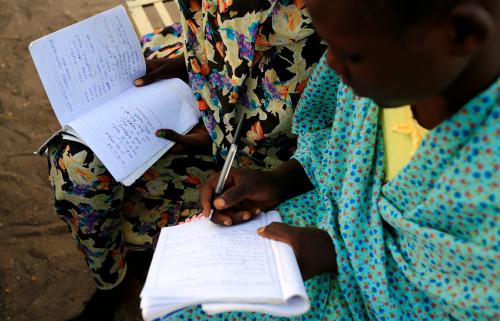
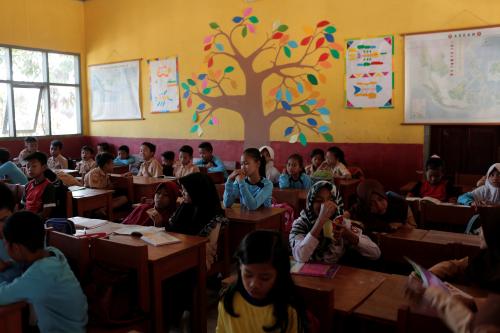
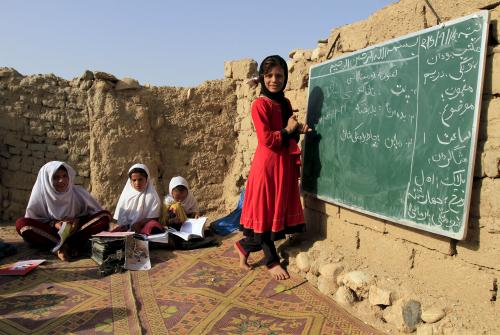
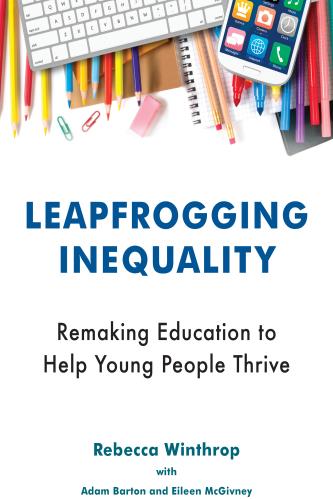
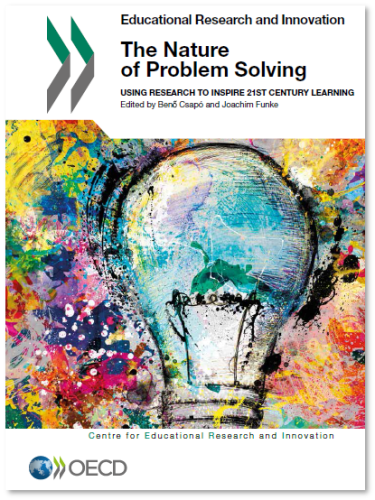
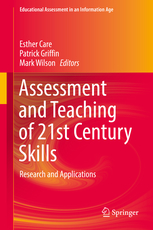


Commentary
Blueprints, bureaucrats, and scaling up: Lessons for education from BRAC’s fight against cholera in Bangladesh
August 18, 2015